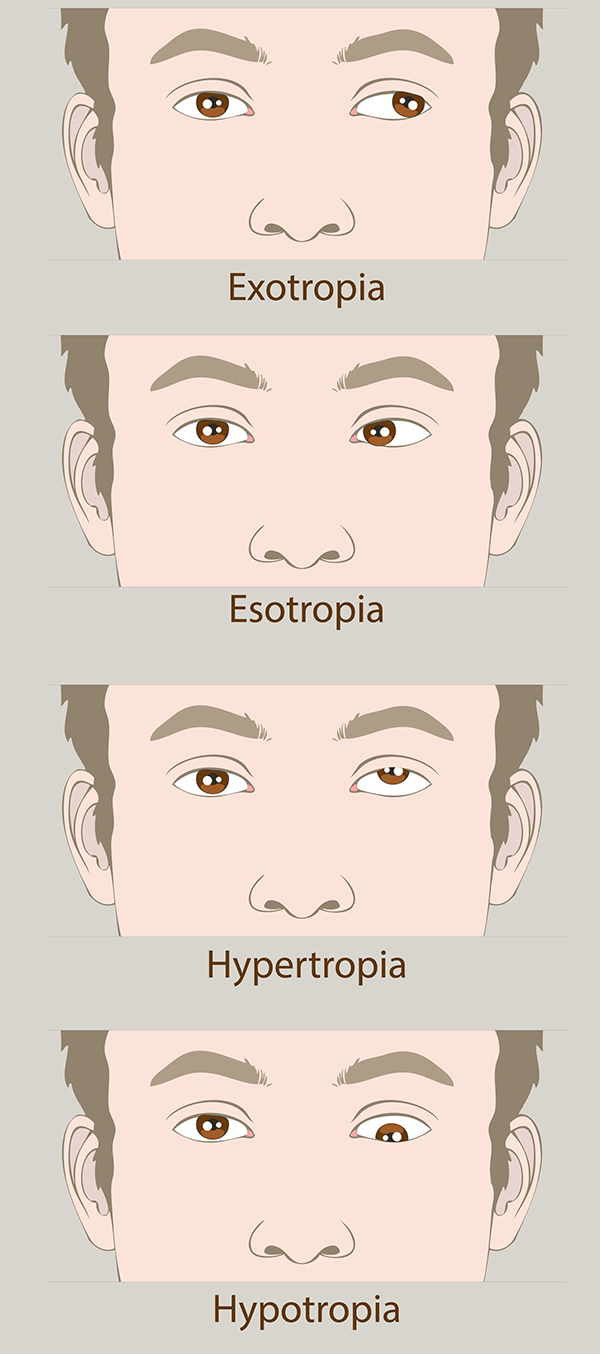Amblyopia Treatment in Toms River
Amblyopia, commonly known as lazy eye, is a condition where vision in one of the eyes is reduced because the eye and the brain are not working together properly. The visual loss in amblyopia cannot be corrected by just wearing glasses. Amblyopia is the most common cause of visual impairment during childhood. The condition affects approximately 2 to 3 out of every 100 children. It is thought to develop early in life during the critical period of visual development. Unless it is successfully treated in early childhood, amblyopia usually persists into adulthood, and is the most common cause of monocular (one eye) visual impairment among children and young and middle-aged adults.
What causes amblyopia?
Amblyopia may be caused by any condition that affects normal visual development or use of the eyes. Strabismus, which is an imbalance in the positioning of the two eyes, is the most common cause of amblyopia. Strabismus can cause the eyes to cross in (esotropia) or turn out (exotropia). Other causes of amblyopia include childhood cataracts, nearsightedness, farsightedness and astigmatism. There is often a family history of this condition.
What are the symptoms of amblyopia?
The symptoms of amblyopia include:
- Eyes that turn in or out
- Eyes that do not appear to work together
- Inability to judge depth correctly
- Poor vision in one eye
How is amblyopia diagnosed?
Amblyopia is usually easily diagnosed with a complete examination of the eyes. Special tests are usually not needed.
What is the treatment for amblyopia?
In general, the earlier the child has the condition for the development of amblyopia the worse it may become. Similarly, the earlier the treatment is started, the better the opportunity to reverse vision loss. Before treating amblyopia, it may be necessary to first treat the underlying cause. Glasses are commonly prescribed to improve focusing or misalignment of the eyes. Surgery may be performed on the eye muscles to straighten the eyes if non-surgical means are unsuccessful. Surgery can help in the treatment of amblyopia by allowing the eyes to work together better. Eye exercises may also be recommended either before or after surgery to correct faulty visual habits associated with strabismus and to teach comfortable use of the eyes. Following treatment of the underlying cause, patching or covering one eye may be required for a period of time. The better-seeing eye is patched, forcing the “lazy” one to work, thereby strengthening its vision. Eye drops or ointment may also be used to blur the vision of the good eye in order to force the weaker one to work. This method, however, is generally a less successful approach.

Office Location:
Dr. Jack Schwartz, OD
Pleasant Plaza
1341 Route 9, Suite 10
Toms River, NJ 08755
(732) 649-1199
Office Hours:
| Monday: | 9:30am - 5:00pm |
| Tuesday: | 9:30am - 5:00pm |
| Wednesday: | 9:30am - 5:00pm |
| Thursday: | 9:30am - 5:00pm |
| Friday: | 9:30am - 5:00pm |
| Saturday: | By Appointment |
| Sunday: | Closed |
Additional Info
To request an appointment, you can call us or fill out our form and a member of our staff will be in touch with you.
Below are the Medical History and Privacy Policy forms you'll need to complete on your first visit. You can expedite matters by downloading these forms, completing them at home and handing them to our staff when you arrive for your initial visit to our office.
Patient History Form
HIPPA Form
In order to view or print these forms you will need Adobe Acrobat Reader installed. Click here to download it.



